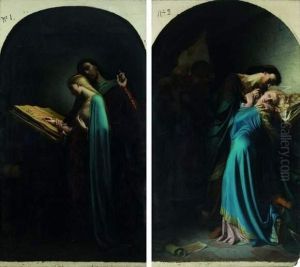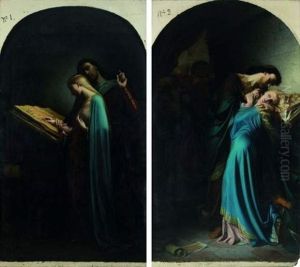Leon Marie Joseph Billardet Paintings
Leon Marie Joseph Billardet was a French artist born in 1839, whose work spanned the latter part of the 19th century, a period rich in artistic evolution and innovation. Billardet's contributions to art, particularly in the realms of engraving and illustration, reflect the dynamic and changing tastes of the era, bridging the gap between traditional and modern aesthetics. Despite not being as widely recognized as some of his contemporaries, his work offers valuable insights into the artistic and cultural shifts of his time.
Billardet's early life and education in the arts were rooted in the vibrant cultural atmosphere of France, which was a global center for artistic production and innovation during his lifetime. He developed a keen interest in engraving and illustration, disciplines that were highly regarded and in demand for the reproduction of artworks and the illustration of books and periodicals. This period saw a burgeoning in publishing, driven by technological advances and a growing literate population, which created ample opportunities for artists skilled in these areas.
Throughout his career, Leon Marie Joseph Billardet contributed to various publications, employing his talents to bring literary and journalistic works to life through visual representation. His engravings often captured the essence of the narrative or subject matter with precision and creativity, making them an integral part of the storytelling process. Additionally, his illustrations served not only as embellishments but also as critical interpretations of the texts they accompanied, thus playing a significant role in how such works were received and understood by their audiences.
Despite the significant contributions of Leon Marie Joseph Billardet to the art world, his name has not endured as prominently as some of his peers'. Nonetheless, his body of work remains an important testament to the rich artistic landscape of 19th-century France. Billardet passed away in 1904, leaving behind a legacy that, while perhaps not widely celebrated, is deeply appreciated by those who delve into the nuances of this period's artistic achievements. His work continues to be studied by art historians and enthusiasts who recognize the value of his contributions to the fields of engraving and illustration.


